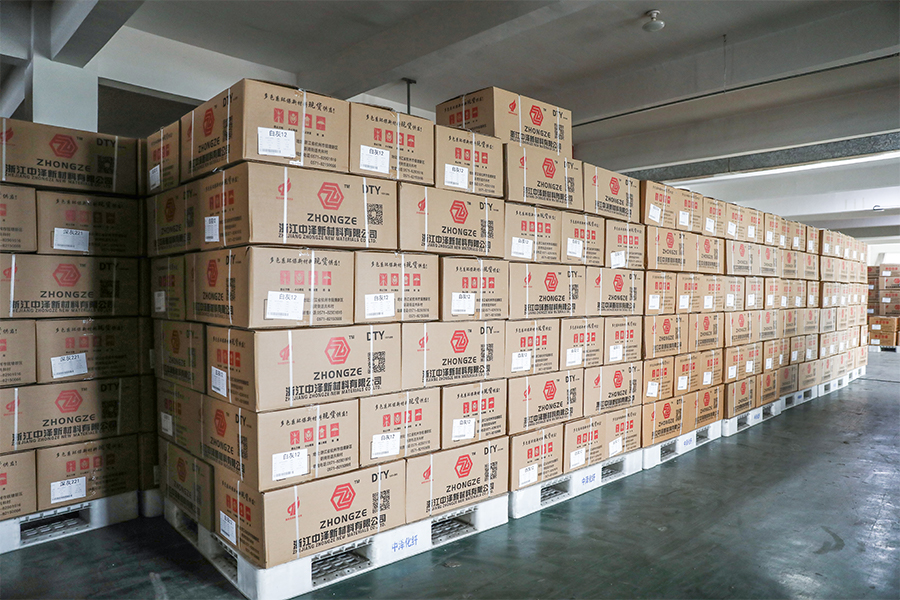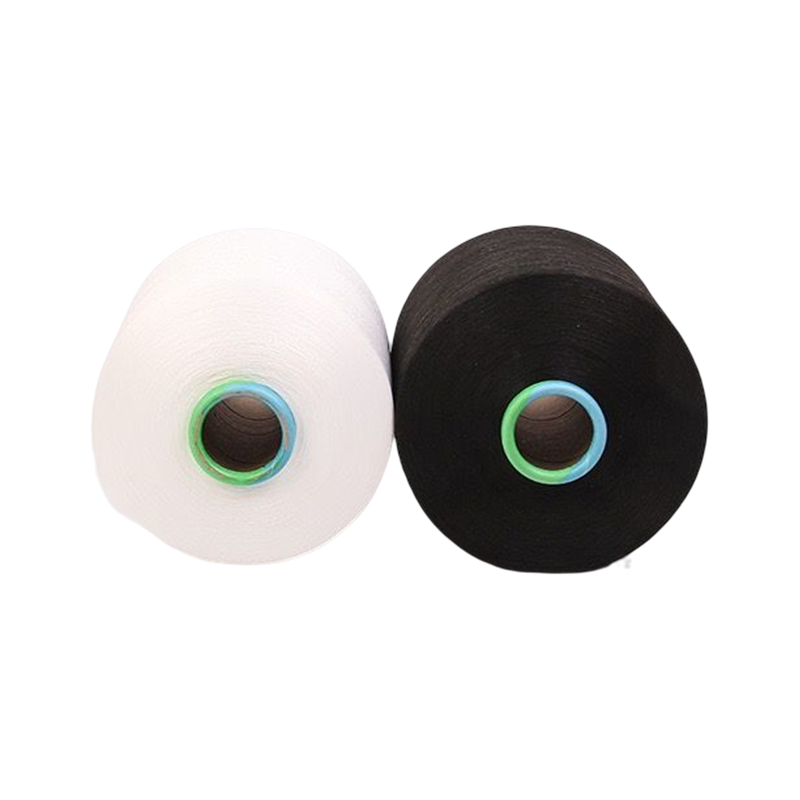The textile industry is increasingly moving towards high-performance materials that offer more than just basic functionality. Polyester DTY yarn, known for its durability and elasticity, serves as an excellent base for incorporating advanced properties like antibacterial protection and UV resistance. The process of adding functional additives to DTY yarn requires precise methodology and understanding of both chemistry and textile engineering. This comprehensive guide explores the various techniques, additive types, and quality control measures essential for producing high-value functional yarns that meet modern market demands.
Wash-resistant and wear-resistant polyester DTY yarn Yellow/Grey/White ZY0076-ZY0334 178
Understanding Functional Additives for DTY Yarn
Functional additives are specialized substances incorporated into textiles to impart specific properties beyond their natural characteristics. For Polyester DTY yarn, these additives can transform standard yarn into premium, technical materials suitable for specialized applications. The selection and integration of these additives require careful consideration of compatibility, durability, and intended end-use.
- Antibacterial Additives: These substances inhibit the growth of bacteria, fungi, and other microorganisms, making them ideal for activewear, medical textiles, and home furnishings.
- UV-Resistant Compounds: These additives absorb or reflect harmful ultraviolet radiation, protecting both the fabric and the wearer from sun damage.
- Permanent vs. Temporary Treatments: Understanding the difference between additives integrated at the polymer stage versus those applied topically is crucial for durability expectations.
- Compatibility Considerations: Additives must be chemically compatible with polyester to ensure even distribution and maintained yarn properties.
Methods for Incorporating Functional Additives
The effectiveness and durability of functional properties largely depend on the method of incorporation. Different approaches offer varying levels of permanence, uniformity, and cost-effectiveness. Understanding methods for incorporating additives in DTY yarn is fundamental to achieving consistent results.
Masterbatch Addition During Polymerization
This method involves adding concentrated additive masterbatch during the polymer chip manufacturing stage or during the melt spinning process. The additives become an integral part of the polymer matrix, resulting in the most permanent functional properties.
- Superior Durability: The functional properties withstand multiple washes and extended use since the additives are embedded within the fiber.
- Uniform Distribution: When properly processed, this method ensures even distribution of additives throughout the yarn cross-section.
- Technical Requirements: Requires specialized equipment and precise control of temperature and mixing parameters to prevent degradation.
- Higher Initial Cost: While more expensive initially, it offers better long-term value due to the permanence of the functionality.
Topical Application During Texturing
This approach applies additives during the draw texturing process, typically through finish rolls or spraying systems. The additives coat the yarn surface, providing functional properties through surface contact.
- Process Flexibility: Allows for quick changes between different additive types without interrupting polymer production.
- Cost-Effectiveness: Lower initial investment makes it accessible for smaller production runs and experimental developments.
- Durability Limitations: Surface-applied treatments may gradually diminish with repeated washing or abrasion.
- Application Precision: Requires precise control of application rates to ensure consistent coverage and functionality.
| Method | Durability | Cost Factor | Best For |
| Masterbatch Addition | Excellent (Permanent) | Higher Initial Cost | Medical textiles, premium sportswear |
| Topical Application | Good to Moderate | Lower Initial Cost | Fashion apparel, home textiles |
| Graft Polymerization | Excellent | Highest Cost | Technical textiles requiring extreme durability |
Antibacterial Additives: Types and Mechanisms
Creating effective antibacterial DTY yarn production involves selecting the right antibacterial agents and understanding their mechanisms of action. The choice of antibacterial technology affects not only the efficacy but also the safety and environmental impact of the final product.
- Silver-Based Technologies: Silver ions disrupt bacterial cell membranes and interfere with cellular metabolism, providing broad-spectrum protection.
- Zinc Oxide Particles: These nanoparticles generate reactive oxygen species that damage bacterial cells while also offering some UV protection.
- Quaternary Ammonium Compounds: These chemicals disrupt cell membrane integrity through electrostatic interaction, effectively killing microorganisms.
- Natural Extracts: Substances like chitosan offer biodegradable alternatives, though they may have limitations in durability and spectrum of activity.
UV-Resistant Technologies for Enhanced Protection
Developing effective UV-resistant DTY yarn techniques requires understanding both the nature of ultraviolet radiation and the mechanisms by which additives provide protection. The effectiveness is typically measured by UPF (Ultraviolet Protection Factor) ratings.
- UV Absorbers: These organic compounds absorb UV radiation and convert it into harmless heat energy, preventing damage to both fabric and skin.
- Inorganic UV Blockers: Titanium dioxide and zinc oxide nanoparticles physically block and scatter UV radiation through reflection and scattering.
- Hindered Amine Light Stabilizers (HALS): These additives scavenge free radicals formed by UV exposure, protecting the polymer structure from degradation.
- Combination Approaches: Many high-performance UV treatments combine multiple technologies for synergistic protection and enhanced durability.
Quality Control and Testing Methods
Ensuring consistent performance of functional Polyester DTY yarn requires rigorous quality control protocols. The verification of functional properties involves standardized testing methods that quantify effectiveness and durability.
Testing Antibacterial Efficacy
Antibacterial performance is typically evaluated using international standards that measure the reduction of specific bacterial strains after contact with the treated fabric.
- AATCC 100 Standard: Measures the quantitative reduction of bacteria after specified contact time.
- ISO 20743 Standard: Provides multiple inoculation methods for assessing antibacterial activity.
- JIS L 1902 Standard: Japanese industrial standard widely used for textile antibacterial testing.
- Durability Testing: Evaluating antibacterial efficacy after multiple washing cycles to ensure permanent functionality.
Evaluating UV Protection Performance
UV protection is quantified through standardized testing that measures the fabric's ability to block ultraviolet radiation. Understanding how to test UV resistance in polyester yarn is crucial for quality assurance and marketing claims.
- UPF (Ultraviolet Protection Factor) Testing: Measures the ratio of UV radiation reaching the skin with and without fabric protection.
- AS/NZS 4399 Standard: Australian/New Zealand standard for sun protective clothing testing.
- AATCC 183 Standard: Determines the transmittance or blocking of erythemally weighted UV radiation through fabrics.
- Spectrophotometric Analysis: Uses specialized equipment to measure UV transmission across different wavelengths.
| UPF Rating | Protection Category | % UV Radiation Blocked |
| 15-24 | Good Protection | 93.3-95.9% |
| 25-39 | Very Good Protection | 96.0-97.4% |
| 40-50+ | Excellent Protection | 97.5%+ |
Application Areas and Market Trends
The demand for functional Polyester DTY yarn continues to grow across multiple sectors. Understanding these applications helps manufacturers tailor their additive approaches to specific market needs.
- Healthcare Textiles: Antibacterial yarns for surgical gowns, drapes, and bedding help reduce healthcare-associated infections.
- Sportswear and Activewear: Both antibacterial and UV-resistant properties are highly valued for performance and comfort.
- Outdoor Furniture and Awnings: UV resistance extends product life while maintaining color fastness.
- Automotive Interiors: Antibacterial properties in seat covers and interior fabrics improve cabin hygiene.
- Home Textiles: Curtains, upholstery, and bedding benefit from both functionalities for enhanced living environments.
FAQ
How long do antibacterial properties last in treated DTY yarn?
The durability of antibacterial properties depends significantly on the incorporation method. For antibacterial DTY yarn production using masterbatch addition during polymerization, the properties are typically permanent and last the lifetime of the fabric, as the antibacterial agents are embedded within the fiber structure. These yarns can maintain efficacy through 50+ industrial washes. Topical applications, while effective, may gradually diminish after 20-30 washes depending on the specific chemistry and washing conditions. At Hengke Textile Technology Co., Ltd., we conduct accelerated washing tests to verify durability claims and ensure our functional yarns meet industry standards for permanent antibacterial protection.
What is the difference between UV-resistant and UV-blocking yarn?
While these terms are often used interchangeably, they describe different mechanisms of protection in UV-resistant DTY yarn techniques. UV-resistant yarn typically refers to treatment that protects the yarn itself from UV degradation, preventing strength loss and color fading. UV-blocking yarn is specifically engineered to protect human skin from harmful UV radiation. The latter is quantitatively measured by UPF (Ultraviolet Protection Factor) rating. Many high-quality treatments achieve both objectives simultaneously – protecting the integrity of the Polyester DTY yarn while also providing skin protection. The specific methods for incorporating additives in DTY yarn will influence whether the primary function is resistance or blocking, though advanced formulations can accomplish both.
Can antibacterial and UV-resistant properties be combined in one yarn?
Yes, combining multiple functionalities in a single Polyester DTY yarn is not only possible but increasingly common in technical textiles. This multifunctional approach typically involves either using hybrid additives that provide both properties or carefully selecting compatible additives that can be incorporated simultaneously. The key challenge in adding functional additives to DTY yarn with multiple properties lies in ensuring chemical compatibility and maintaining the efficacy of each function without negative interactions. At our manufacturing facilities, we've developed specialized masterbatches that incorporate both silver-based antibacterial agents and ceramic UV blockers, creating yarns that offer UPF 50+ protection alongside 99% bacterial reduction. This approach is particularly valuable for sportswear, outdoor furniture, and healthcare applications where multiple protective functions are required.
How does the addition of functional additives affect yarn processing and properties?
The adding functional additives to DTY yarn process requires careful adjustment of processing parameters to accommodate the presence of these additional components. Additives can affect melt viscosity during spinning, potentially requiring temperature adjustments. Some abrasive additives may increase guide and heater wear in texturing machines. Regarding yarn properties, properly incorporated additives typically maintain the fundamental characteristics of Polyester DTY yarn while adding the desired functionality. There might be minimal changes in tenacity (typically less than 10% variation) and slight modifications in dye affinity that need to be accounted for in coloration processes. However, with proper formulation and process optimization, these effects can be minimized to produce functional yarns that process similarly to conventional counterparts while offering valuable additional properties that command premium market positions.

 English
English
 Español
Español


-2.png)


-2.png)
-2.png)
-3.png)
